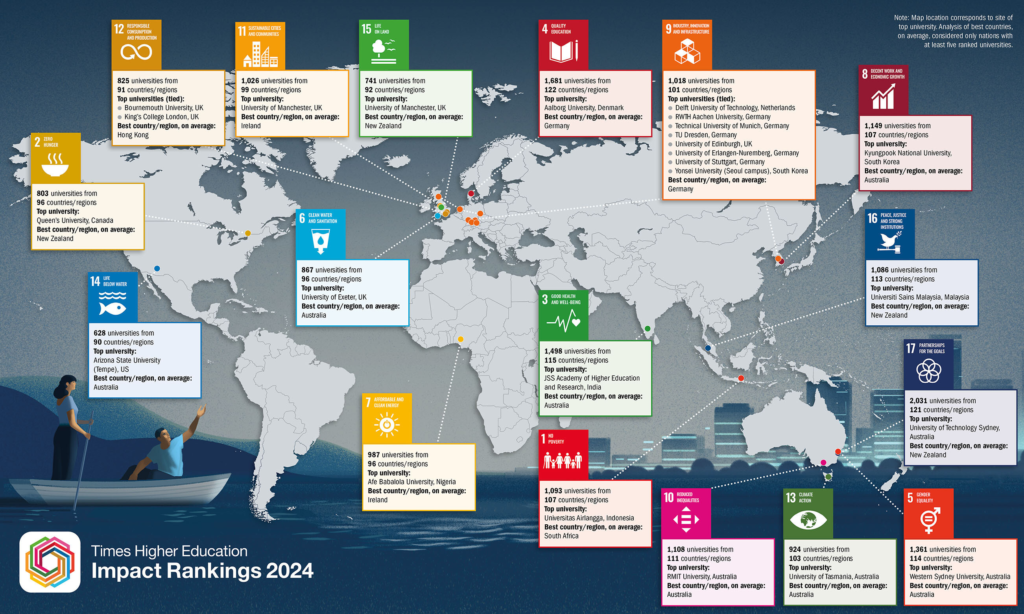University rankings have become a significant factor in the higher education landscape, influencing student choices, institutional strategies, and global perceptions. From their early beginnings to the sophisticated systems used today, the evolution of university rankings reflects broader trends in education, technology, and global connectivity. Understanding this evolution provides insight into how rankings have shaped and will continue to shape the higher education sector.

Past: The Origins of University Rankings
The concept of university rankings has its roots in the mid-20th century, a period when higher education was expanding rapidly, and institutions sought to establish their reputations. The first notable rankings emerged in the 1980s, with publications like U.S. News & World Report in the United States introducing a structured approach to evaluating universities. Initially, these rankings were based on a limited set of criteria, such as academic reputation, faculty qualifications, and student selectivity.
During this period, rankings were often criticized for their simplicity and the subjective nature of the metrics used. For instance, early rankings primarily relied on surveys and reputation scores, which did not always reflect the diverse aspects of academic quality. Despite these limitations, the introduction of rankings marked a significant shift in how universities were evaluated, providing a benchmark for comparison and influencing institutional strategies.
Present: The Rise of Comprehensive and Global Rankings
In the 21st century, university rankings have evolved to become more comprehensive and global in scope. Today’s rankings are driven by organizations such as QS World University Rankings, Times Higher Education (THE), and Academic Ranking of World Universities (ARWU). These rankings use a wide range of criteria, including research output, teaching quality, international outlook, and industry income.
Modern rankings also incorporate advanced methodologies and data analytics. Institutions are assessed through a combination of quantitative metrics and qualitative assessments, offering a more nuanced view of their performance. For example, QS World University Rankings evaluates universities based on indicators like academic reputation, employer reputation, faculty-student ratio, and citations per faculty. Similarly, THE considers teaching, research, citations, international outlook, and industry income in its rankings.
The emphasis on global rankings reflects the growing interconnectedness of higher education. Universities are now compared on an international scale, highlighting their global influence and attractiveness. This shift has led to increased competition among institutions worldwide, as universities strive to improve their global standing and attract top talent from across the globe.

Future: Trends and Challenges in University Rankings
As we look to the future, the evolution of university rankings is expected to continue, driven by emerging trends and challenges. One key trend is the increasing focus on sustainability and social impact. Future rankings may incorporate metrics related to environmental sustainability, social responsibility, and community engagement, reflecting the growing importance of these issues in higher education.
Another anticipated development is the integration of new technologies and data sources. Advances in data analytics, machine learning, and big data could enhance the accuracy and depth of rankings. For example, real-time data on student outcomes, employment rates, and research impact could provide a more dynamic and up-to-date assessment of university performance.
However, the future of university rankings will also face challenges. Critics argue that rankings can perpetuate inequities, favoring well-established institutions while overlooking emerging or smaller universities. There is also concern about the overemphasis on certain metrics, which may not fully capture the quality and diversity of educational experiences. Addressing these issues will be crucial in ensuring that rankings remain a valuable and equitable tool for evaluating higher education institutions.
Additionally, as universities continue to adapt to the changing landscape of education, including the rise of online learning and alternative credentials, rankings will need to evolve to reflect these new realities. Institutions that offer innovative programs, online courses, and flexible learning options may require new metrics to capture their contributions effectively.
Conclusion
The evolution of university rankings reflects the dynamic nature of higher education, from their early beginnings to the sophisticated systems of today and the trends shaping their future. While rankings have become an integral part of the higher education landscape, influencing student choices and institutional strategies, they must continue to adapt to ensure they provide a comprehensive and equitable evaluation of academic quality. As universities navigate these changes, the ongoing development of rankings will play a crucial role in shaping the future of higher education.



